Cutting metal is a very common task in metalworking projects and different types of tools may be required for different metals and cutting requirements. Below are some common tools suitable for cutting metal that have their advantages and uses in different situations.
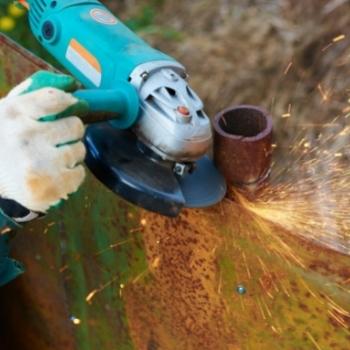
Purpose: An angle grinder is a handheld power tool that is commonly used to cut, grind and polish metal. It can be paired with different types of cutting discs, including metal cutting discs, for cutting metal workpieces.
Strengths: Angle grinders offer flexibility and versatility for tasks such as rough cutting, grinding, edge dressing and polishing.
USES: A hand saw is a hand-held tool with a finely toothed blade used for cutting metal tubes, bars and small sections of metal material.
Advantages: Hacksaws are suitable for small workpieces and precision cutting, do not require electrical power supply and are portable.
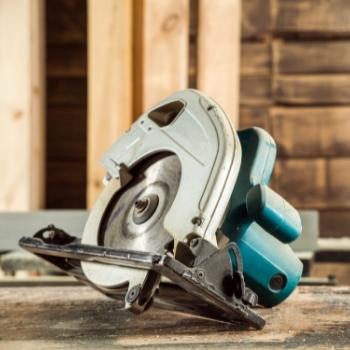
Purpose: Circular saws equipped with metal cutting blades are used to cut larger sheets of metal and materials.
Advantage: Circular saws are faster and suitable for cutting thicker metal materials.
Purpose: A bandsaw is a stationary machine with a continuous band of toothed blades used to cut metal workpieces, including straight and curved cuts.
Advantages: Bandsaws are suitable for high precision and complex cutting tasks and are capable of cutting larger sized workpieces.
Purpose: Plasma cutters use a high-speed jet of ionized gas to cut metal and are suitable for fast and precise metal cutting.
Advantage: Plasma cutters are suitable for a wide range of metal types and thicknesses, cutting at high speeds and with less heat impact.
Purpose: Laser cutters use a focused laser beam to make high-precision cuts and are commonly used in industrial and manufacturing applications.
Advantage: Laser cutting provides superior cutting accuracy for complex shapes and fine holes.
Purpose: The Oxy-Fuel Cutting Torch uses a mixture of oxygen and fuel gas (e.g. acetylene) to cut metal.
Advantage: Ideal for cutting thicker metal materials such as steel plates.
Purpose: Waterjet Cutters use a high-pressure water jet mixed with abrasive to cut metal and other materials in a variety of materials and thicknesses.
Advantage: Waterjet cutting has no thermal effects, is suitable for sensitive materials and enables high precision cutting.
Purpose: Shears are designed to make straight cuts in sheet metal or plate metal and are particularly suitable for thin metals.
Advantages: Shears cut quickly and are suitable for large metal sheets.
Purpose: The Nibbler is a hand-held or bench-top tool used to make small, precise cuts in sheet metal, such as cutting holes or curves.
Advantages: Suitable for tasks requiring precise cuts and capable of cutting complex shapes.
Purpose: The Chop Saw is a specialized machine for making straight, orthogonal cuts in metal materials.
Advantage: Ideal for quickly cutting long straight metal workpieces.
Purpose: The Die Grinder is a rotary tool for grinding, polishing and cutting metal with different attachments.
Advantage: Suitable for detail work and metal finishing.
Purpose: Chainsaws with metal cutting blades can be used to cut thin metal sheets and are suitable for cutting complex curves and shapes.
Advantage: Suitable for jobs that require precise cutting, such as metal decorating work.
Choosing the right tool for cutting metal depends on the type and thickness of the metal, the cutting requirements and the working environment. Using the right tools can increase productivity and ensure quality cuts, but it's important to follow safety regulations when operating these tools to prevent accidental injury.
Cutting thick hardened steel is a challenging task as hardened steel is usually very hard and difficult to cut. When performing this task, you need to choose the right tools, material preparation and safety measures. Below is a detailed guide on how to cut thick hardened steel:
Before cutting thick hardened steel, you will need to make some preparations to ensure the task goes smoothly:
1. Choose the right tools:
Cutting thick hardened steel requires special tools, here are some common options:
Plasma Cutter: A plasma cutter is a very effective tool for cutting hardened steel, even if it is very hard. A plasma cutter cuts metal with a high-speed jet of ionized gas.
Oxy-Fuel Cutting Torch: The Oxy-Fuel Cutting Torch uses a mixture of oxygen and fuel gas flames to cut. For thicker hardened steels, an Oxy-Fuel Cutting Torch may be required.
Laser Cutter: The laser cutter is suitable for cutting hardened steel for fine work, enabling high precision cutting.
Waterjet Cutter: Waterjet cutters use a high-pressure water jet mixed with an abrasive to cut hardened steel and are suitable for a wide range of thicknesses and complex shapes.
2. Understand the properties of hardened steel:
Hardened steel is usually treated by heating and cooling to increase hardness and wear resistance. This means it can be very hard and difficult to cut. It is vital to understand the properties of hardened steel before cutting.
3. Safety measures:
Ensure that you take appropriate safety measures when cutting hardened steel, including wearing safety glasses, protective clothing, gloves, and face masks to protect yourself from splashes, sparks, and fumes that may be generated during the cutting process.
The following are general steps for cutting thick, hardened steel; the cutting process may vary using a plasma cutter, oxyfuel cutting torch, laser cutter, or waterjet cutter:
1. Set up the tool:
Plasma cutter: Make sure to set the proper cutting current and gas flow. Adjust these parameters according to the thickness and type of hardened steel.
Oxyfuel cutting torch: Set the correct oxygen and fuel gas flow, usually propane or acetylene. Make sure the cutting torch is in the proper position.
Laser Cutting Machines: Set the laser power and focus position according to the thickness and requirements of the hardened steel.
Waterjet Cutting Machine: Set the proper water pressure and abrasive flow rate to ensure stability of the cutting process.
2. Positioning and clamping the workpiece:
Secure the hardened steel workpiece to the table to ensure that it does not move or wobble during the cutting process. Use clamps or magnetic fixtures to keep the workpiece stable.
3. Start cutting:
Depending on your choice of tools and equipment, take one of the following steps:
Plasma Cutting Machine: Bring the cutting gun close to the workpiece and start the power supply to trigger the cutting arc. Slowly move the cutting gun to cut along the desired cut line.
Oxyfuel Cutting Torch: Light the oxyfuel cutting torch, point the nozzle at the workpiece and slowly move the nozzle to create a flame and cut the metal.
Laser Cutter: Start the laser cutter and aim the laser beam at the cut line on the workpiece. The laser will cut hardened steel by melting and evaporating.
Waterjet Cutter: Activate the waterjet cutter and aim the high pressure water jet at the cut line on the workpiece. The water jet will impact the hardened steel at a high velocity to make the cut.
4. Controlled Cutting Speed:
Depending on the cutting tool and the type and thickness of the hardened steel, control the cutting speed. Cutting too fast may result in an uneven cut, while cutting too slow may result in excessive heating of the material.
5. Inspecting the cut:
Stop periodically to check the quality of the cut. Make sure the cut is straight and free of excessive spatter and residue.
6. End cut:
After completing the cutting task, turn off the cutting tool, wait for the metal to cool, and then check the cut to make sure it meets the requirements.
Cutting thick, hardened steel can be a challenging task and therefore requires special attention to safety and maintenance. Here are some additional safety and precautions:
Ventilation: Ensure that the work area is adequately ventilated to remove fumes and harmful gases generated.
Vision protection: Wear appropriate safety glasses and face shield to prevent eye injuries from sparks, slag spatter and other splashes generated during the cutting process.
FIRE FIGHTING EQUIPMENT: Keep fire extinguishers or other appropriate fire fighting equipment near the work area to prevent fires.
MAINTENANCE TOOLS: Inspect and maintain cutting tools regularly to ensure proper operation. Replace cutting blades, nozzles, or other parts to maintain tool performance.
Observe safety regulations: Strictly follow the instructions and safety regulations for the cutting tool to minimize the risk of accidents.
Prevent overheating: Make sure that you do not overheat hardened steel during the cutting process, as this may cause the material to lose its hardness and strength.
Dispose of waste materials: dispose of waste cutting materials and resulting spatter properly to ensure a tidy and safe work area.
Cutting thick hardened steel is a task that requires specialized tools and skills. Using the proper tools and following safety measures will ensure that the cutting process is efficient and safe. If you are unfamiliar or inexperienced, it is best to hire a professional to perform this task to ensure quality and safe work.
Richconn is a professional metal fabrication service provider based in China, dedicated to providing a wide range of customized solutions to our customers. We have extensive experience and expertise in metal fabrication, providing high quality services for a wide range of industries and applications. Below are the main services we provide:
Metal Cutting Services:Richconn has a wide range of metal cutting tools and techniques to accurately cut different types and thicknesses of metal materials. Our cutting services cover a wide range of cutting processes such as angle grinders, oxycutting, plasma cutting, laser cutting and waterjet cutting to meet the specific needs of our customers.
CNC Machining Services: We use computer numerical control (CNC) technology to perform high-precision metal machining to manufacture a wide variety of customized parts and assemblies.Richconn's CNC machining covers a wide range of processes such as milling, turning, drilling, and wire EDM to ensure the accuracy and quality of our customers' projects.
Sheet metal services: In sheet metal processing, we can manufacture a variety of sheet metal products, including housings, cases, panels, and brackets. These products are widely used in electronics, machinery, communications, energy and other fields to meet the needs of different industries.
Die Casting Services: Richconn provides die casting services to manufacture complex shaped metal parts using high quality alloys and metal materials. Die casting is an efficient production method for a variety of applications, including automotive, electronics, and medical devices.
Our team of experienced professionals is equipped with state-of-the-art equipment and technology to meet the customized needs of our clients. Regardless of the size of your project, we are committed to providing high-quality metal fabrication solutions and ensuring on-time delivery.Richconn will continue to uphold the spirit of professionalism, provide exceptional customer service, and achieve mutual success. If you have any questions about metal fabrication or specific project needs, please feel free to contact us and we will be happy to support and assist you.
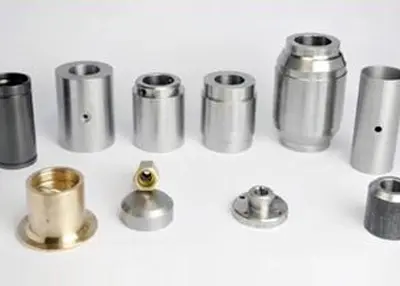 What is a shaft in manufacturing? Detailed Process and TypesMay 4, 2024Explore the detailed process of shaft machining, its types, and surface finish choice. Discover challenges where shaft machining could be avoided.view
What is a shaft in manufacturing? Detailed Process and TypesMay 4, 2024Explore the detailed process of shaft machining, its types, and surface finish choice. Discover challenges where shaft machining could be avoided.view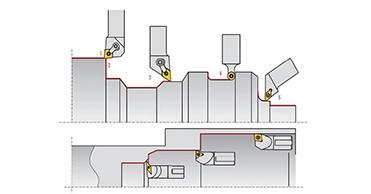 American Scientific Research Has Found A Fast And Effective Processing Method Of Low-Temperature Titanium AlloyMay 30, 2022Titanium is widely used in the aerospace industry because of its high strength and low density. However, compared with steel, aluminum, and other metals, its hot processing cost is high and it is at a...view
American Scientific Research Has Found A Fast And Effective Processing Method Of Low-Temperature Titanium AlloyMay 30, 2022Titanium is widely used in the aerospace industry because of its high strength and low density. However, compared with steel, aluminum, and other metals, its hot processing cost is high and it is at a...view Methods and Characteristics of Electrophoretic Metal CoatingJune 17, 2024Methods of Electrophoretic Metal CoatingDue to the different nature of electrophoretic metal coating itself, it is divided into two kinds: anodic electrophoretic metal coating and cathodic electrophor...view
Methods and Characteristics of Electrophoretic Metal CoatingJune 17, 2024Methods of Electrophoretic Metal CoatingDue to the different nature of electrophoretic metal coating itself, it is divided into two kinds: anodic electrophoretic metal coating and cathodic electrophor...view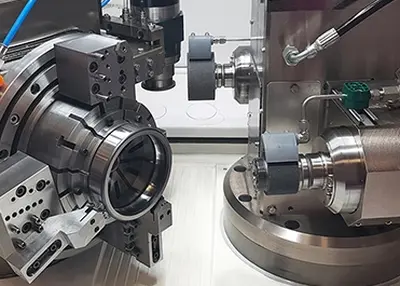 Tips On How to Find Low Cost CNC Milling ServicesOctober 24, 2023CNC milling services are not cheap. The more accurate the design you need, the more money you can expect to spend. Reliable machine shops employ professional operators who use state-of-the-art equipment to fulfill orders. As a result, you can't afford to ignore your budget in order to shorten lead times or gain a competitive edge.view
Tips On How to Find Low Cost CNC Milling ServicesOctober 24, 2023CNC milling services are not cheap. The more accurate the design you need, the more money you can expect to spend. Reliable machine shops employ professional operators who use state-of-the-art equipment to fulfill orders. As a result, you can't afford to ignore your budget in order to shorten lead times or gain a competitive edge.view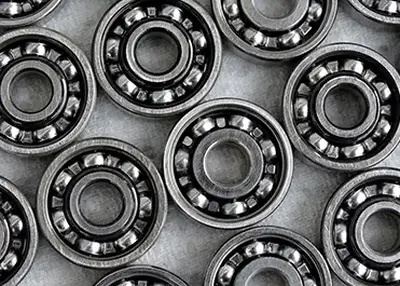 Machined Bearings Basics and Working PrinciplesNovember 9, 2023Welcome to the world of Machined Bearings, where precision engineering meets mechanical efficiency. If you're here, you're probably as curious as I was when I first delved into this field. You're in for a treat because we've crafted a comprehensive guide to take you on a journey through Machined Bearings, from the basics to advanced applications.view
Machined Bearings Basics and Working PrinciplesNovember 9, 2023Welcome to the world of Machined Bearings, where precision engineering meets mechanical efficiency. If you're here, you're probably as curious as I was when I first delved into this field. You're in for a treat because we've crafted a comprehensive guide to take you on a journey through Machined Bearings, from the basics to advanced applications.view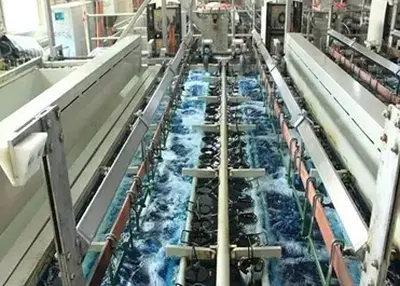 Metal Plating Finishes: Picking the Best for Your Custom PartsMay 16, 2024What are metal plating finishes? How are they applied? What are their benefits and drawbacks? Find out in this guide to metal plating finishes.view
Metal Plating Finishes: Picking the Best for Your Custom PartsMay 16, 2024What are metal plating finishes? How are they applied? What are their benefits and drawbacks? Find out in this guide to metal plating finishes.view